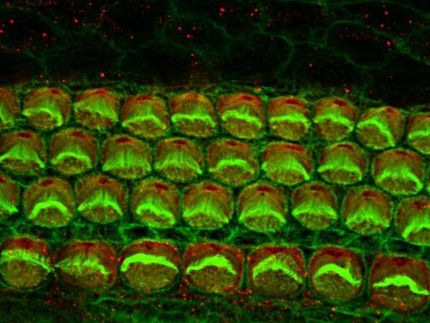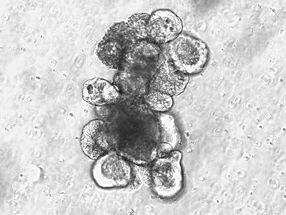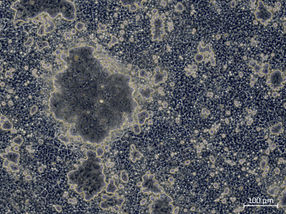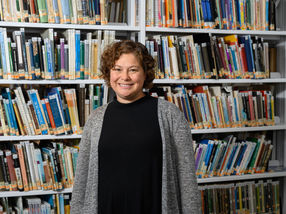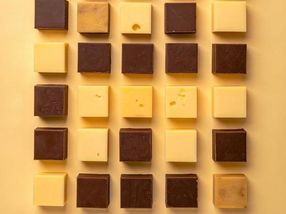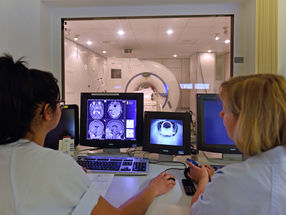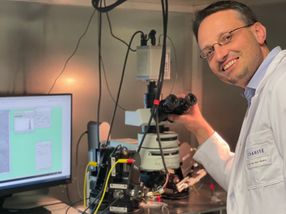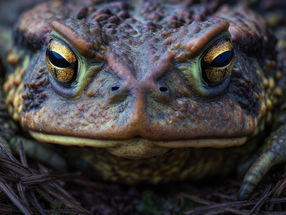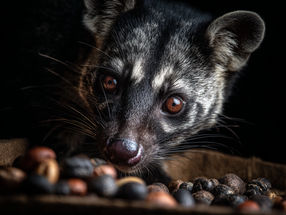Tissue Geometry Plays Crucial Role in Breast Cell Invasion
Advertisement
Researchers with the U.S. Department of Energy's Lawrence Berkeley National Laboratory (Berkeley Lab) have created a first-of-its-kind model for studying how breast tissue is shaped and structured during development. The model may shed new light on how the misbehavior of only a few cells can facilitate metastatic invasion because it shows that the development of breast tissue, normal or abnormal, is controlled not only by genetics but also by geometry. Though created specifically for the study of breast tissue, this model should also be applicable to the study of tissue development in other organs as well.
"Our results reveal that tissue geometry can control the morphogenesis of breasts and other organs by defining the local cellular branching microenvironment," said Mina Bissell, a Distinguished Scientist with Berkeley Lab's Life Sciences Division, who was the principal investigator for this study. "This finding is important not only for understanding how tissue and organs get their organized shapes and patterns, but may in the future reveal mechanisms to control cancer invasion and metastasis."
Bissell and her collaborators describe a study in which the branching of mouse epithelial tubules (hollow tubes made from epithelial cells that form the network of milk ducts in the mature female breast) in culture were subjected to control through a three-dimensional micropatterned assay. Using a special algorithm to quantify the extent of branching, the researchers found that the geometric shape of the tubules determines where branching takes place. This may potentially affect where and how a malignancy spreads.
In mammals, breast tissue begins to morph into milk glands at the onset of puberty. In this process, called branching morphogenesis, epithelial cell tubes begin to migrate outward, invading the surrounding pad of fat cells to form a widely branched tree of milk ducts. Branching morphogenesis is known to involve a complex interplay of both intracellular and extracellular signals that within the context of the tissue determines precisely where new branches are initiated.
Bissell is one of the leading proponents of the idea that a cell's genetic information is supplemented by contextual information encoded within the microenvironment that surrounds the cell. To define the role of positional context, she and co-author Celeste Nelson developed a 3-D micropatterned assay for mammary epithelial branching morphogenesis. This assay enabled them to control the initial geometry of epithelial tubules and to quantify the positions at which they branched.
In their studies, Bissell, Nelson and their colleagues engineered epithelial tubules of defined geometry by embedding functionally normal mouse mammary epithelial cells in cavities of a collagen gel. The epithelial cells formed hollow tubules, according to the size and shape of the collagen cavities. These tubules began branching out into the gel within 24 hours after being treated with epidermal growth factor. To quantify branching and to represent its magnitude and position, the researchers stained the cell nuclei with fluorescent dye and imaged them using confocal microscopy.
"We confirmed that the position of branching depended on the initial geometry of the tubule," said Nelson. "Increasing the length of the tubules increased the magnitude of branching, although cells still branched exclusively from the ends. Curved tubules branched preferentially from the convex side of the curve. Asymmetric branching was also observed in bifurcated tubules and trees, which preferentially branched from distal positions."
The process of normal branching morphogenesis is precise and quantitative, but invasionary; when something goes wrong the process may lend itself to metastasis. With this demonstration of how the normal function of branching morphogenesis is controlled, Bissell believes researchers can now look for ways in which faulty tubule geometry leads to malignancy.
Original publication: M. Bissell, C. Nelson, J. Inman, D. Fletcher, M. VanDuijn; " Tissue Geometry Determines Sites of Mammary Branching Morphogenesis in Organotypic Cultures."; Science 2006.




